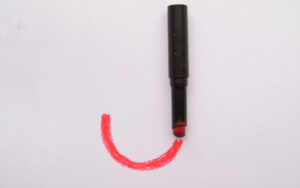How to Write the Perfect Introduction for Your Nonfiction Book

Second only to the book cover, the introduction of a nonfiction book is the most important sales asset at your disposal. In fact, if your book cover is the “lead magnet” that catches the reader’s attention, your introduction is the “closer” that seals the deal.
If you don’t nail this part of your book content, you’ll have to fight an uphill battle trying to convince readers to buy your book.
But here’s the thing: most new authors get this section wrong. I suspect the reason that is back in the day they taught us in school that the introduction of an essay is supposed to “tell your reader what you’re going to tell them,” then you “tell them” in the body of the essay and finally you use the conclusion to “tell them what you told them.”
The problem is that what works for essays doesn’t often work in commercial nonfiction. If you provide a summary of your book in your introduction (“tell your reader what you’re going to tell them”), they simply won’t buy it because you just told them all they need to know.
Instead, your book introduction should really be a “marketing sales letter” where you pitch your book to the reader. In other words, a document carefully crafted with the intent to tease, but never reveal, to hook the reader into wanting to know more, to pique their interest to such an extent that they feel compelled to purchase your book.
So the question now is, how do you go about writing this letter? Is there a formula you can follow to ensure it gets the job done?
Well, you’re in luck, because in this article I’ll share with you the 7 steps you need to follow to nail your book introduction!
Step 1: Begin Your Introduction With a Good Hook

The first step in writing a good introduction is to hook your reader in the opening paragraph. The goal of a hook is to capture your reader’s attention at the very beginning and make them want to read the entire section.
There are many different types of hooks you can use, but the basic structure is the same: you need to highlight the main challenge that afflicts your reader and then show them the expected end result.
Here are three popular opening hook options you can use as inspiration for the first paragraph of your introduction:
• You could use a thought-provoking open-ended question, the answer to which contains the solution to the problem you’re addressing with your book (e.g. “Why do 90% of people who go on a diet end up gaining back more weight than what they lost within six months ?”)
• You could start your paragraph with a story that depicts the emotional journey of a fictitious character who suffers from the problem afflicting your reader. Or you could share an example from your personal life that shows your reader how you overcame this challenge yourself. Or you could share the journey of a client (fictionalizing, names, places, genders, etc.).
• You could start your first introduction paragraph with a statistic that illustrates a controversial piece of information that goes to the crux of your book and at the same time addresses the challenge you’ve set out to address (make sure to reference your sources).
Step 2: Introduce your Solution and Establish Your Credentials
Now that people are hooked, it’s time to tease your solution but doing so in a way that doesn’t disclose your “secret sauce.” As I mentioned before, if you reveal any type of details about your solution in your introduction then you’ll be removing the need for someone to purchase your book.
As an example, you could say something like: “This book will show you the step-by-step approach required in order to permanently overcome _________ .”
Once you’ve teased your solution, you need to establish why you’re qualified to talk about the subject. For instance, you could talk about the journey that led to the discovery of your unique solution, conveying your passion for the subject and the reason why you made it your personal mission to help others afflicted by this problem.
Step 3: Reveal the Journey from Problem to Solution

Now it’s time reveal the specific road map that will take your readers from being afflicted by the problem to being freed by your solution.
For example, you could say something like: “In chapter 1 you’ll learn the best way to ___________. In Chapter 2 you’ll learn how to __________. In Chapter 3 you’ll learn how to ____________,” and so on…
The goal here is to “whet the reader’s appetite” with a high-level view of the kind of results they’ll achieve by reading your book, without revealing any of the specifics.
Next, you need to translate your solution into the clear and tangible benefits that your readers will get by reading the information in your book. These benefits are the various outcomes the reader will experience by putting your solution to work.
Ideally, you want to paint a vivid picture of the reader’s future situation using a rhetorical question — for example, you could say something like this: “Do you want to be stress free?,” “financially free?,” “healthier bones?,” “debt free?” .
Step 4: Provide Social Proof of Your Results
Once you’ve helped your reader “see” what their future will be like after reading your book, you need to earn their trust by showing them tangible proof from someone who’s benefited from your solution.
In other words, this is where you bring up your testimonials, either a statement from real people or a statement from organizations who managed to solve their problems by using your book or your services. Client testimonials are the most effective source of social proof to close a sale (note: make sure you have their written permission before publication).
As a word of caution, never make up testimonials. If these facts ever come out, especially in the age of the Internet where anything in the public domain can be virtually searched forever, it could seriously and perhaps permanently damage your credibility and reputation.
Step 5: Anticipate and Address Objections

Although this is an optional step, I highly recommend it. Many readers will likely feel jaded by similar solutions they must have tried before that didn’t work and will therefore have a built-in skepticism when they read your introduction.
So, research in advance what these specific objections are and counter them in your introduction by providing a logical framework that explains why they’re unwarranted in your case.
The best place to research objections is from your own prospects. Failing that, you can visit forums or online groups (Facebook, LinkedIn, etc.) in the problem area that your book covers and read people’s comments about similar products, approaches or solutions. They’re often a gold mine of information about objections and grievances.
Step 6: Issue a Call to Action
Now, you need to begin your closing arguments. You’ll do this by making it clear to readers that if they follow the secrets/formulas/steps/information revealed in the content of your book, they will overcome their problem (here’s a tip: always make sure to set expectations that express a clear impact — don’t use wishy-washy language that obscures the effect of your solution).
For example, you could say something like:
“If you follow the step-by-step process in this book, you’ll double your investment income in just 3 years….
… you’ll lose weight and never gain it back
… you’ll cut your credit-card debt in half
… etc.”
Step 7: Transition to First Chapter
Finally, you need to wrap up your introduction by inviting your reader to get started on their journey, wishing them well and seamlessly transitioning to your first chapter.
For example, you could write:
“Let’s now embark together on your journey to <desired goals>”
In Closing
Congratulations! You now have all the elements and strategies required to craft a compelling book introduction that can really “seal the deal.” Now, it’s time to get started writing your first draft!
All the best,
Ben
If you enjoyed the information in this article and have started the writing process for your nonfiction book, be sure to check out my free nonfiction success guide, drawn from years of experience editing books for bestselling authors (including a NYT bestseller) and ghostwriting for CEOs and politicians. Simply click here to get instant access.
Leave me a comment below if you have any questions about this article or a specific detail, skills or technique that I can help you with – I operate an author services firm that specializes in helping entrepreneurs, professionals and business owners who want to self publish books.
Here are some related posts I highly recommend:
How to Write a Compelling Book in 12 Steps: A Must-Read Guide for Nonfiction Authors
Write Your Own Book and Become an Expert: 11 Reasons Why You Should
How to Grow Your Business Writing a Nonfiction Book
 Bennett R. Coles is an award-winning writer of six books published through Harper Collins (New York) and Titan Publishing Group (London). He is also the publisher at Promontory Press, editor for multiple bestselling authors (including a NYT bestseller), ghostwriter for CEOs and politicians and the founder of Cascadia Author Services, a boutique full-service firm that specializes in premium services for busy professionals. Our end-to-end services include writers coaching, ghostwriting, editing, proofing, cover design, book layout, eBook production, marketing, printing and distribution.
Bennett R. Coles is an award-winning writer of six books published through Harper Collins (New York) and Titan Publishing Group (London). He is also the publisher at Promontory Press, editor for multiple bestselling authors (including a NYT bestseller), ghostwriter for CEOs and politicians and the founder of Cascadia Author Services, a boutique full-service firm that specializes in premium services for busy professionals. Our end-to-end services include writers coaching, ghostwriting, editing, proofing, cover design, book layout, eBook production, marketing, printing and distribution.
4 responses to “How to Write the Perfect Introduction for Your Nonfiction Book”
-

Dear Ben,
Talking about synchronicity! This is not the first time I got stuck and looking for solutions, and your post popped up in my Inbox as if you always knew what I needed and the time I needed them.This morning, when I was writing the Introduction for my memoir scheduled to be released this summer by my publisher, this article showed up! Yes, I have some of the elements you have mentioned in my writing, but confirming what I have done right is a huge deal for a first-time author. And other parts make me think to go for more both in depth and scale.
Thanks, and looking forward to more. Cheng-

Thank you!
-
-
How many words are typically in an introduction? If a chapter is about 5,000, is it less or the same?
-

There’s no set standard length for an introduction. Your introduction can vary in length depending on the information you deem essential. Given that the introduction typically marks the beginning of your book, you might opt to treat it akin to a standard chapter, ensuring its length aligns with that of your other chapters.
-







Leave a Reply